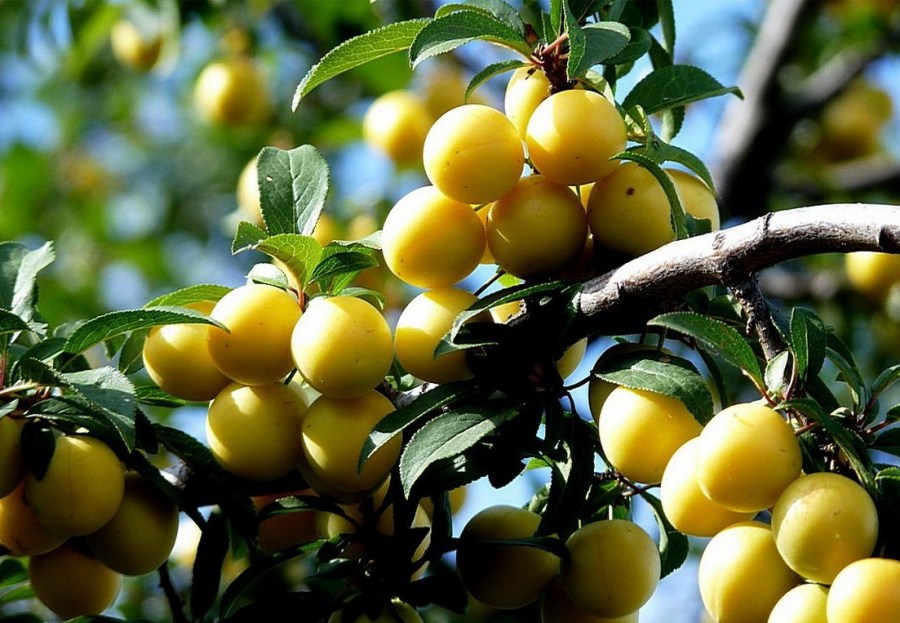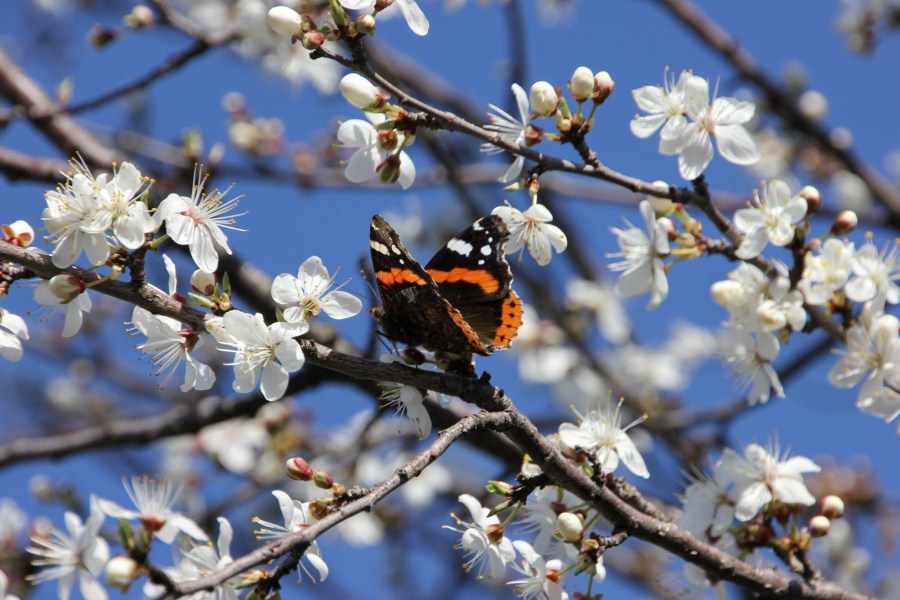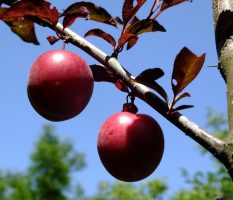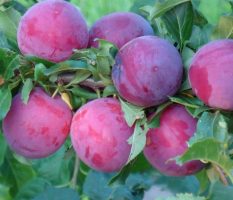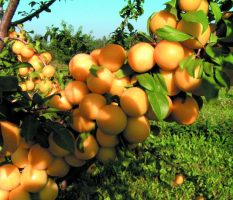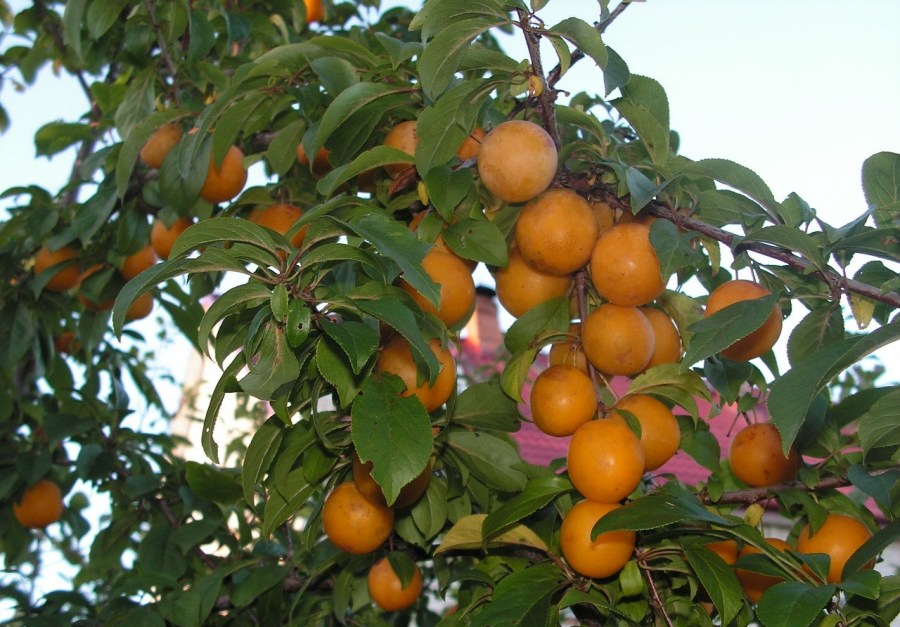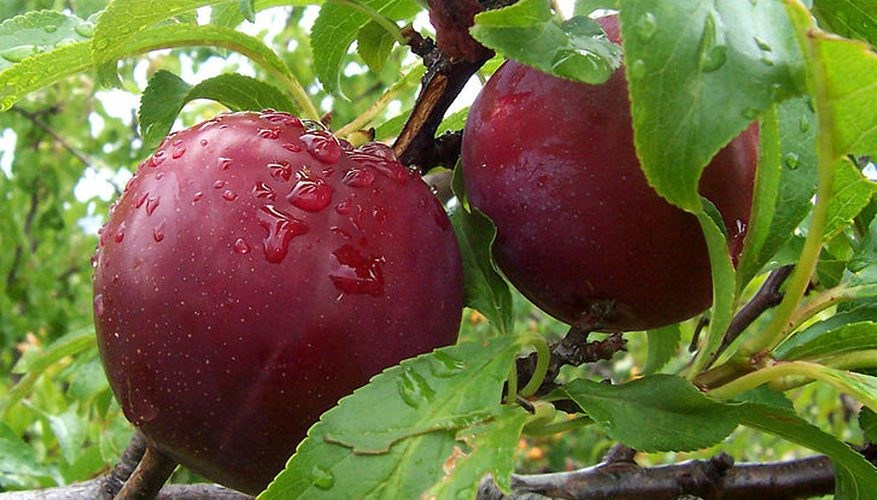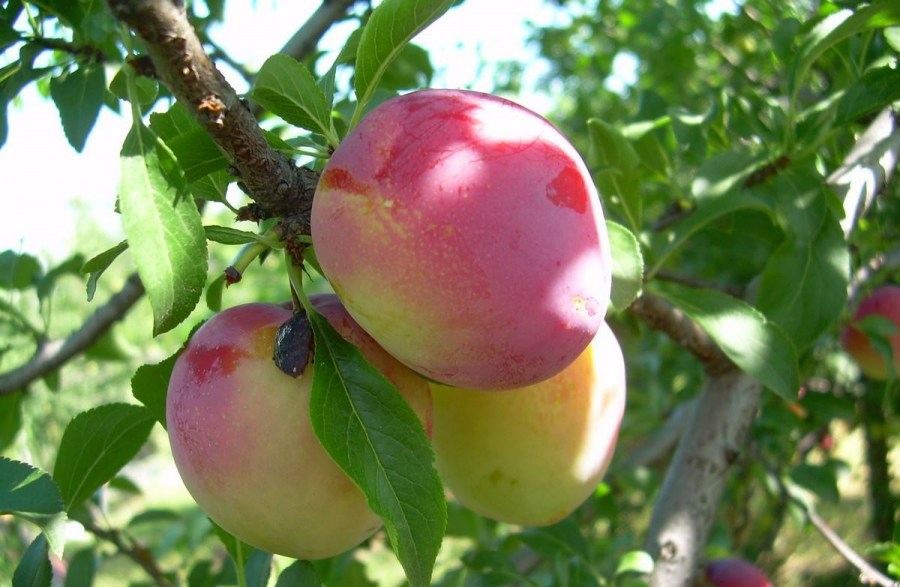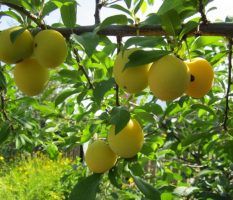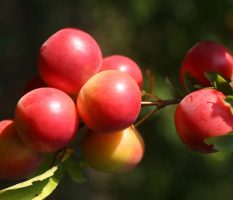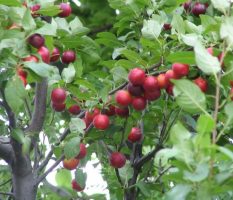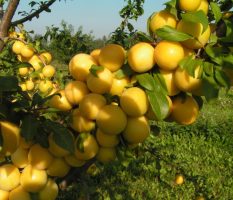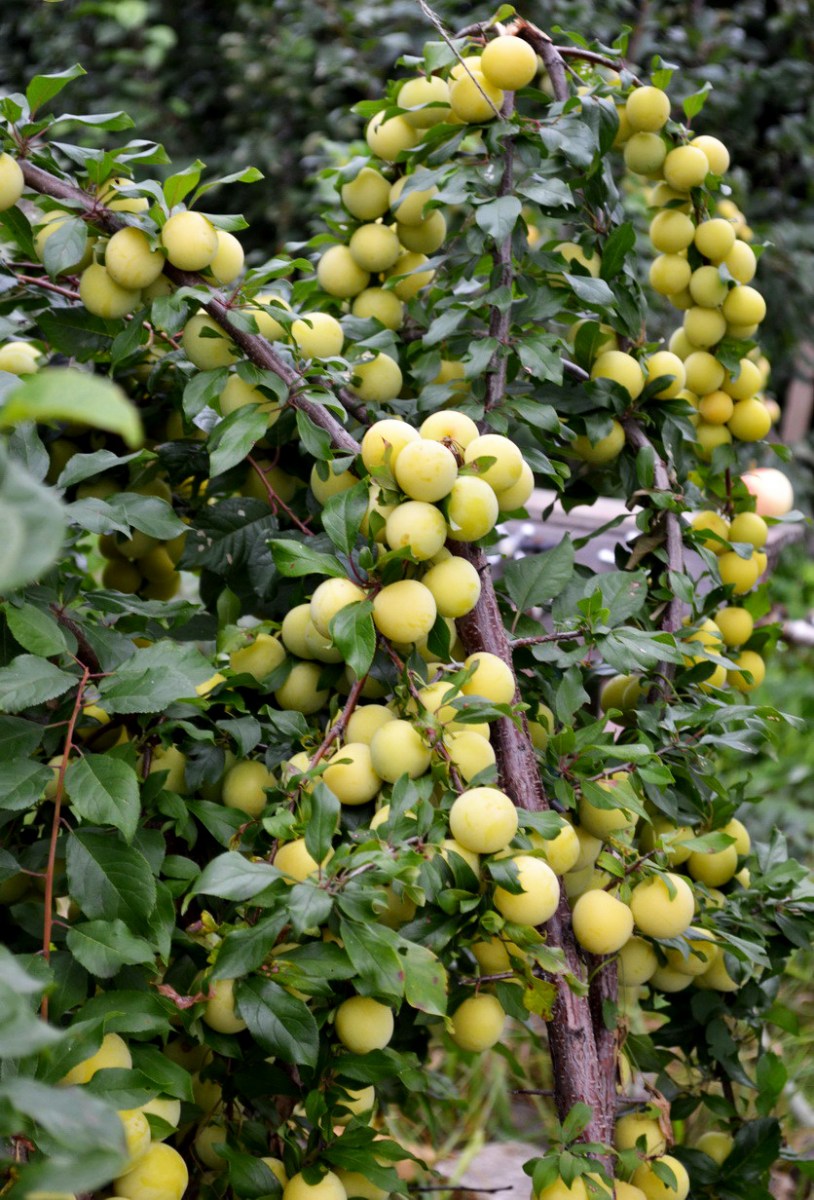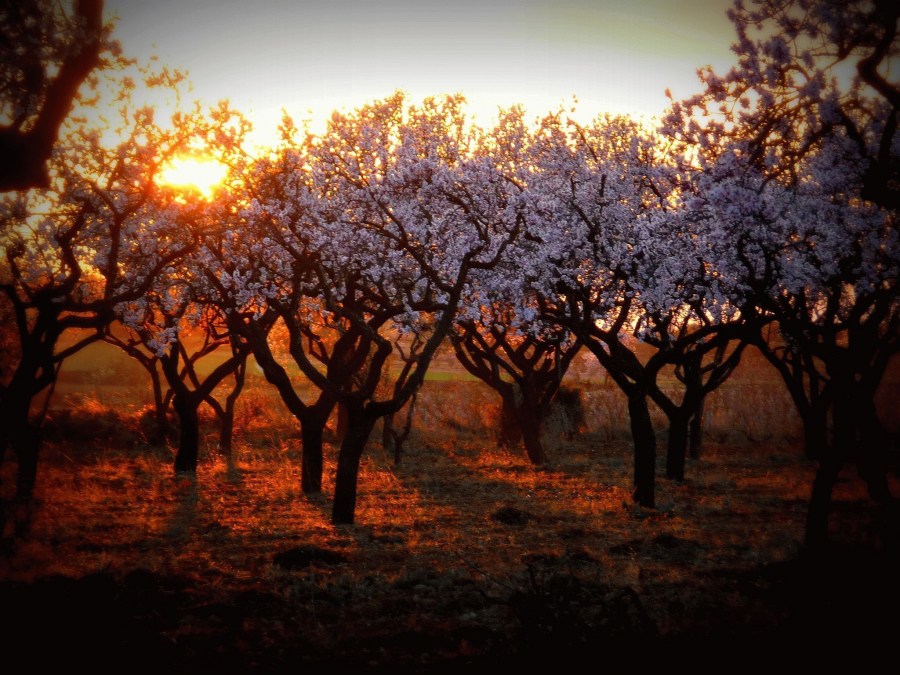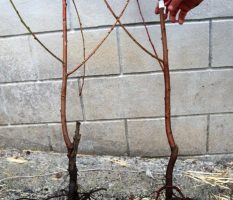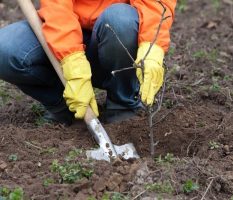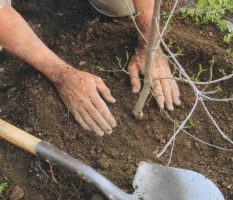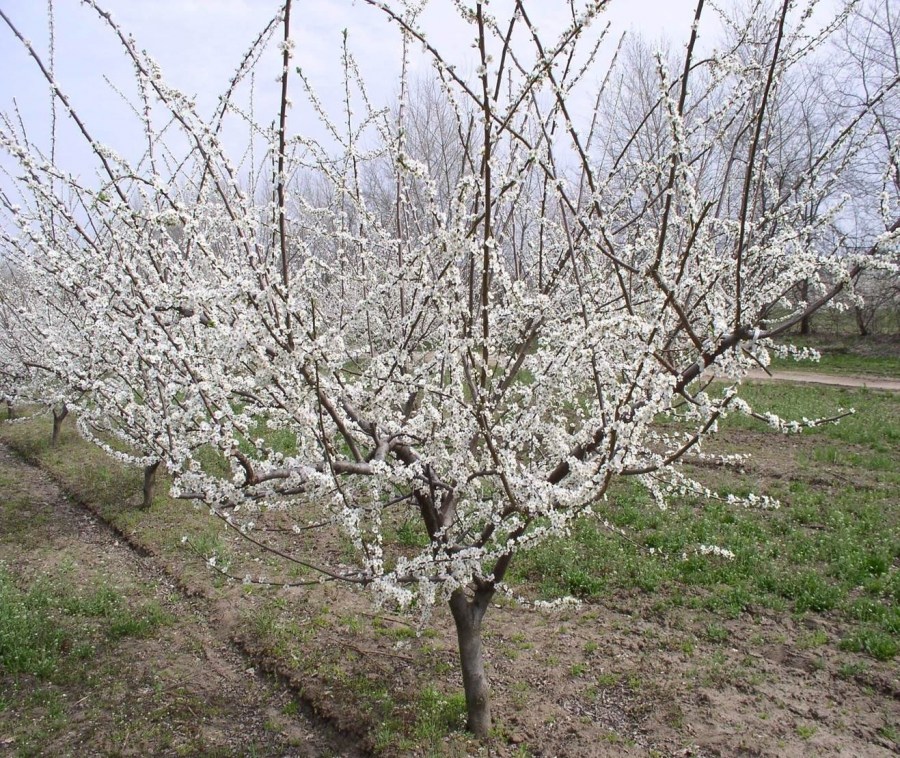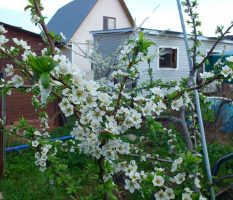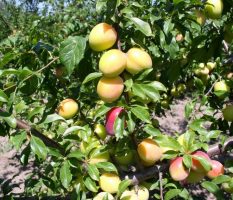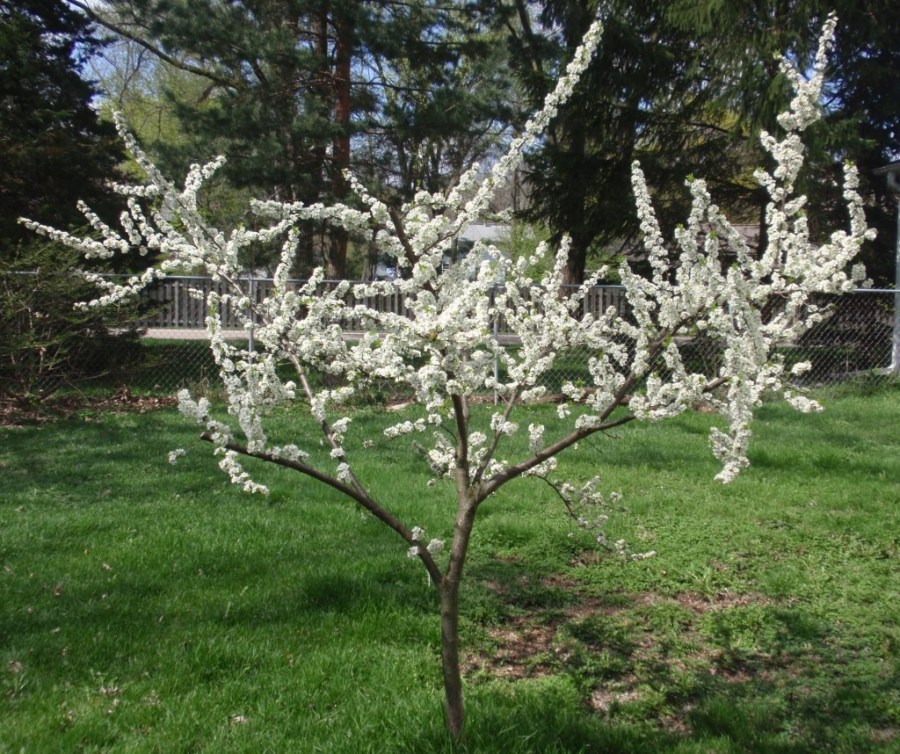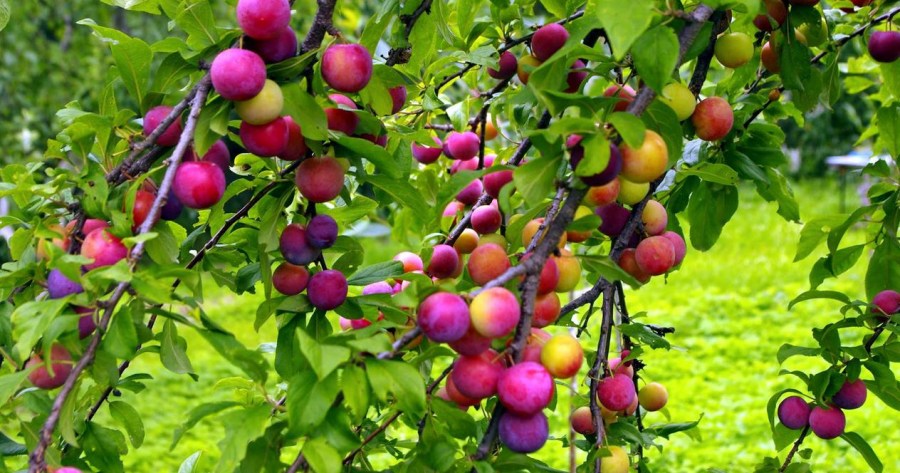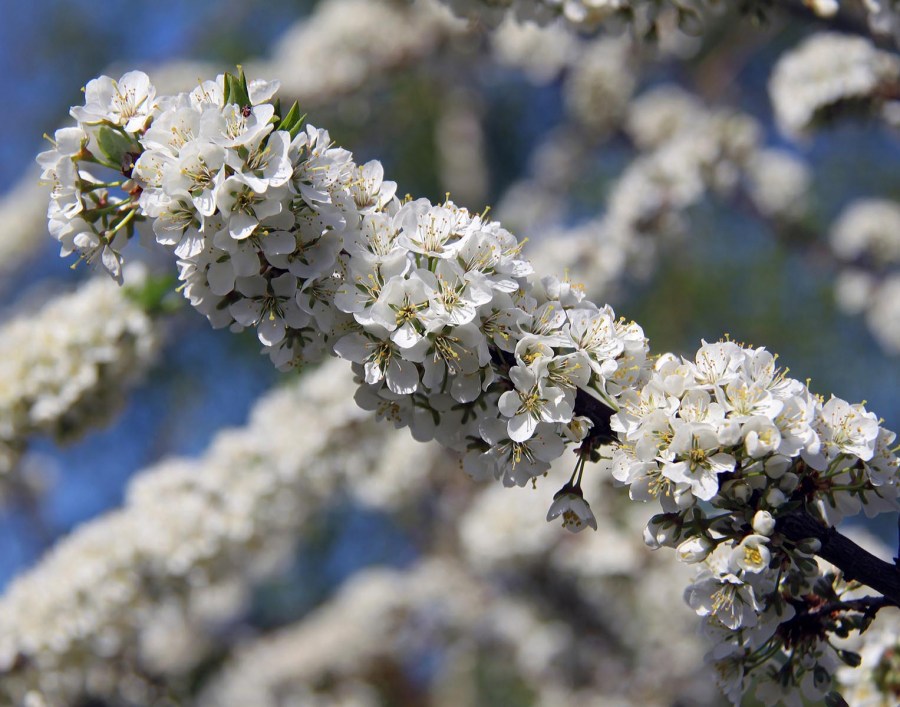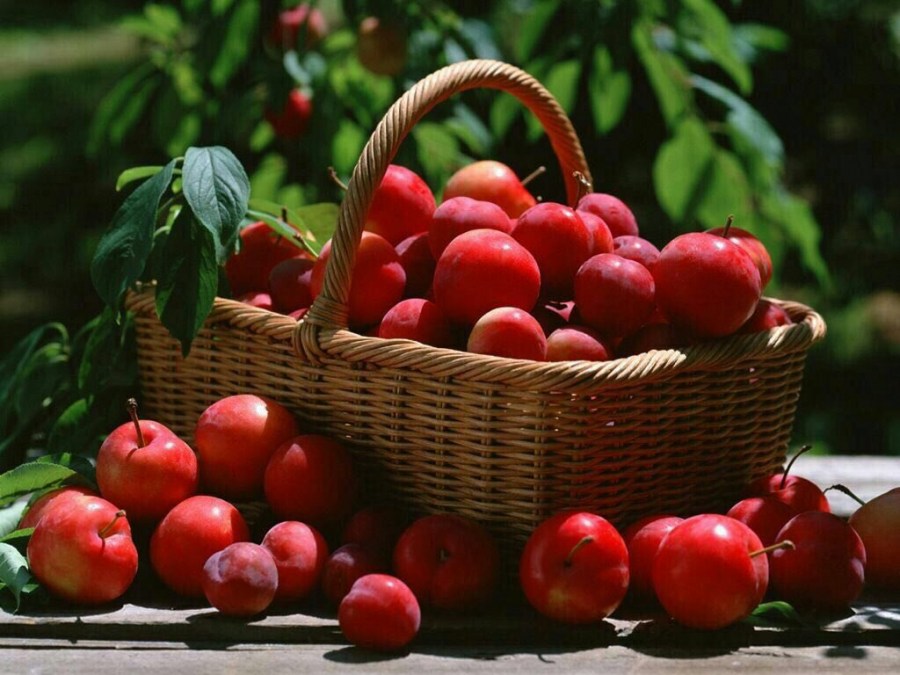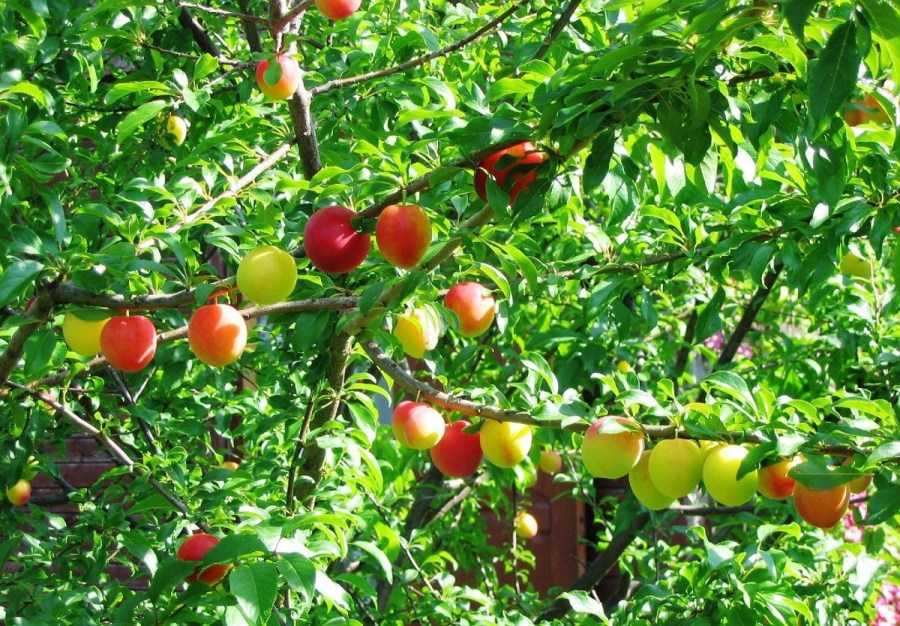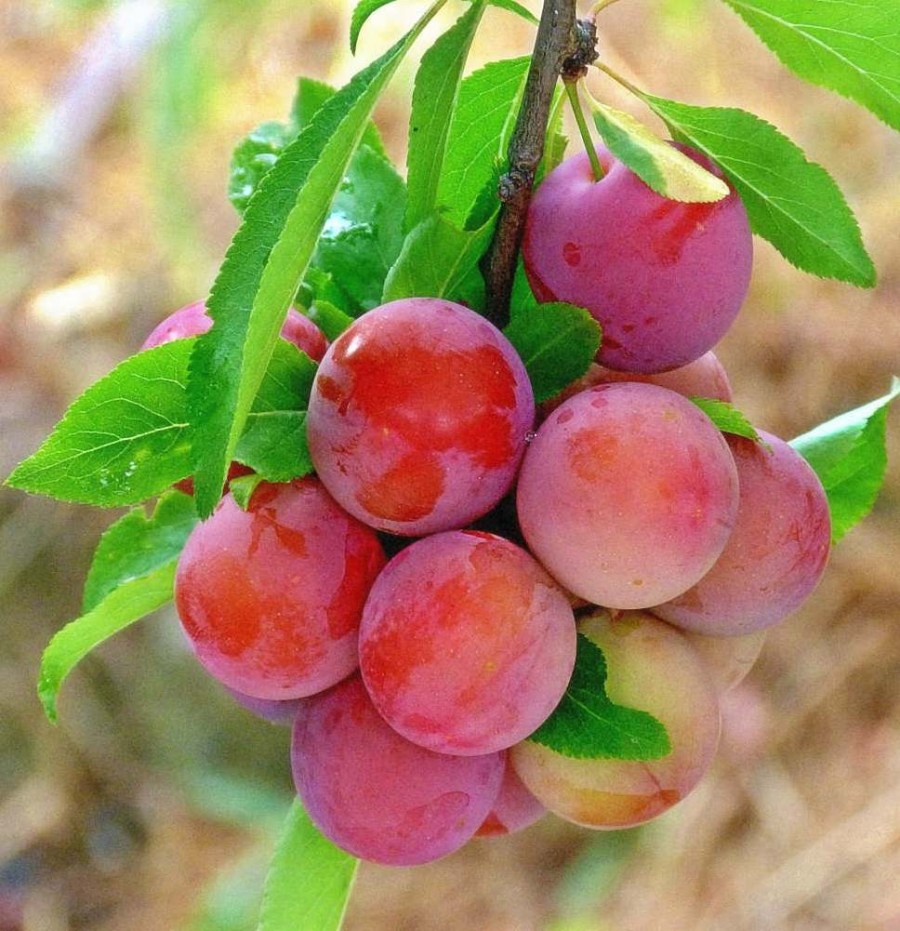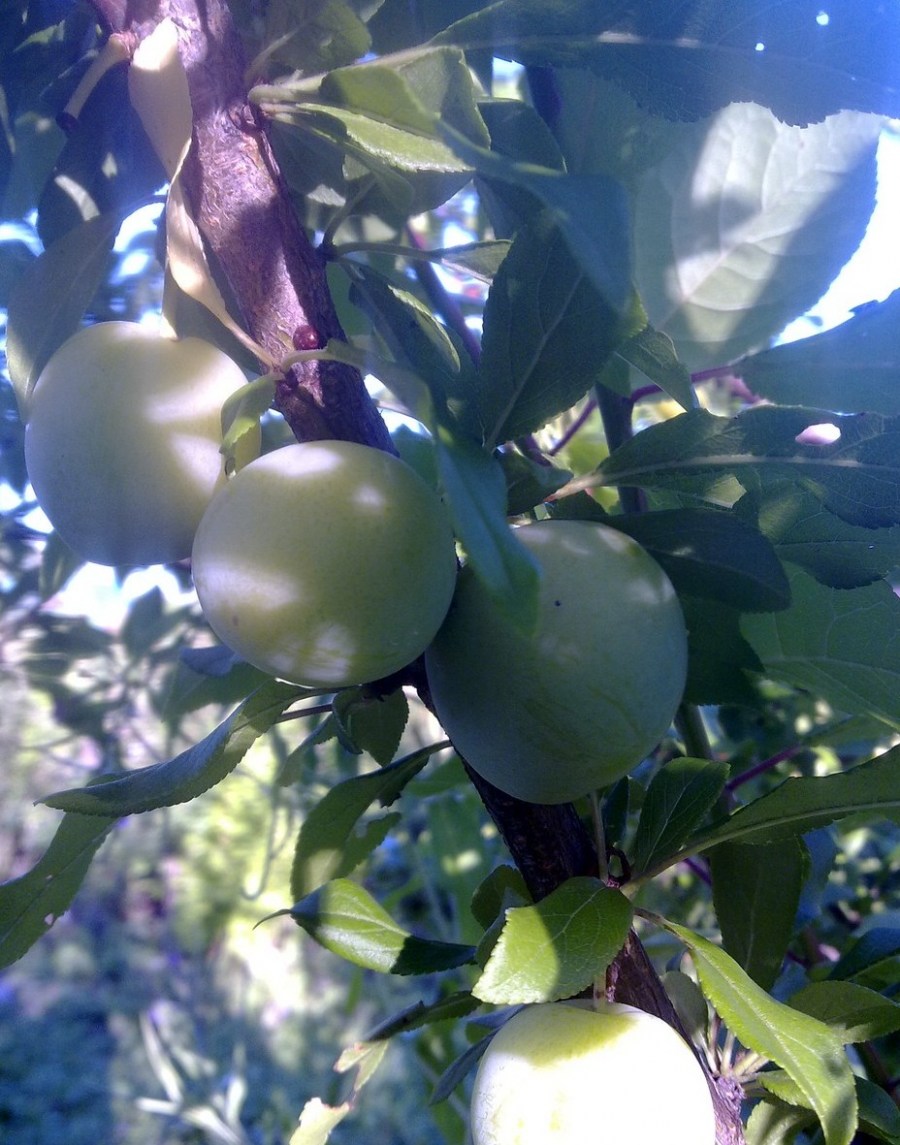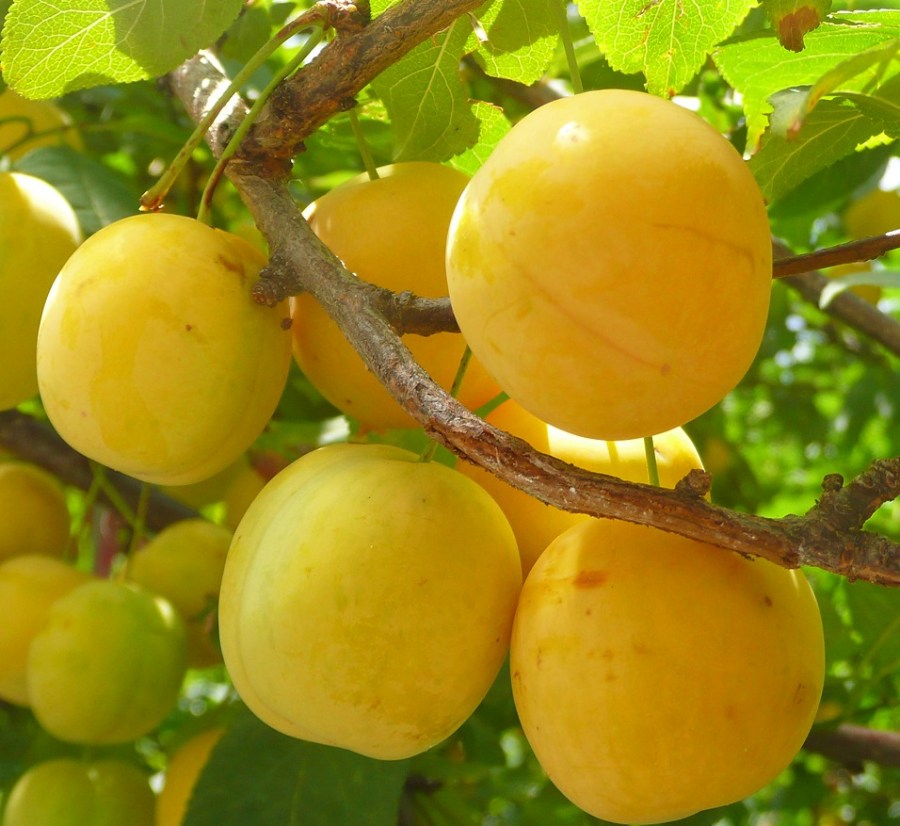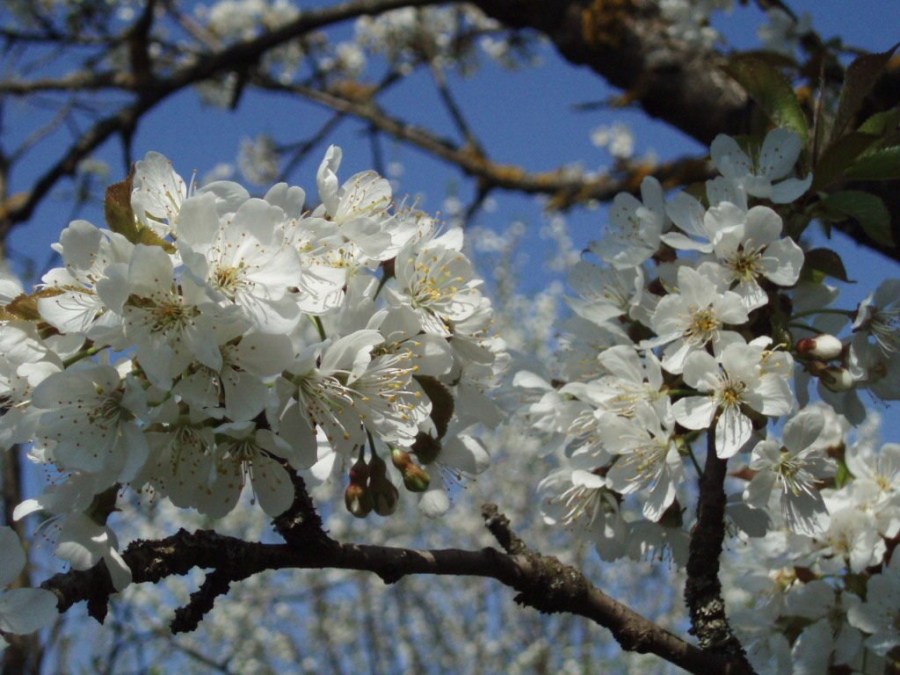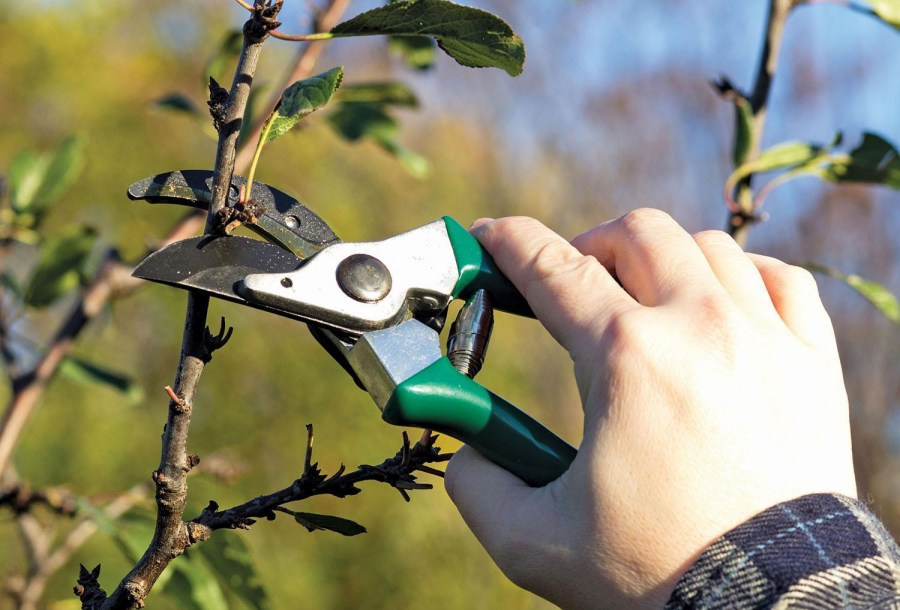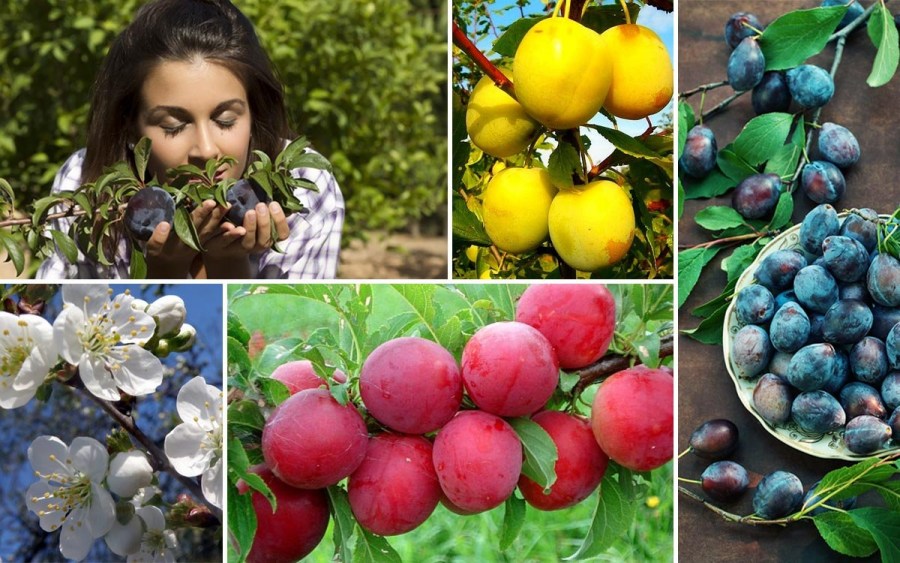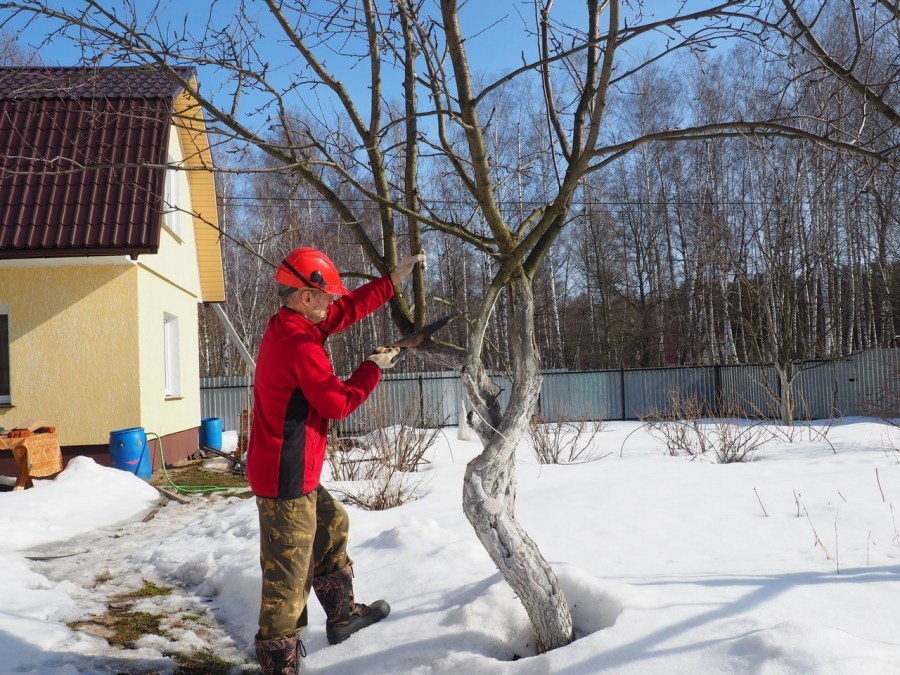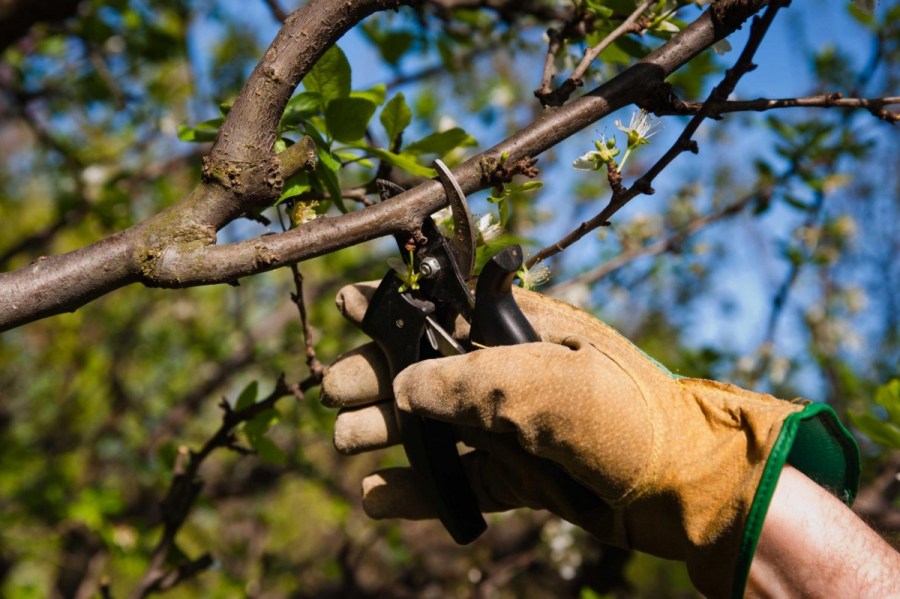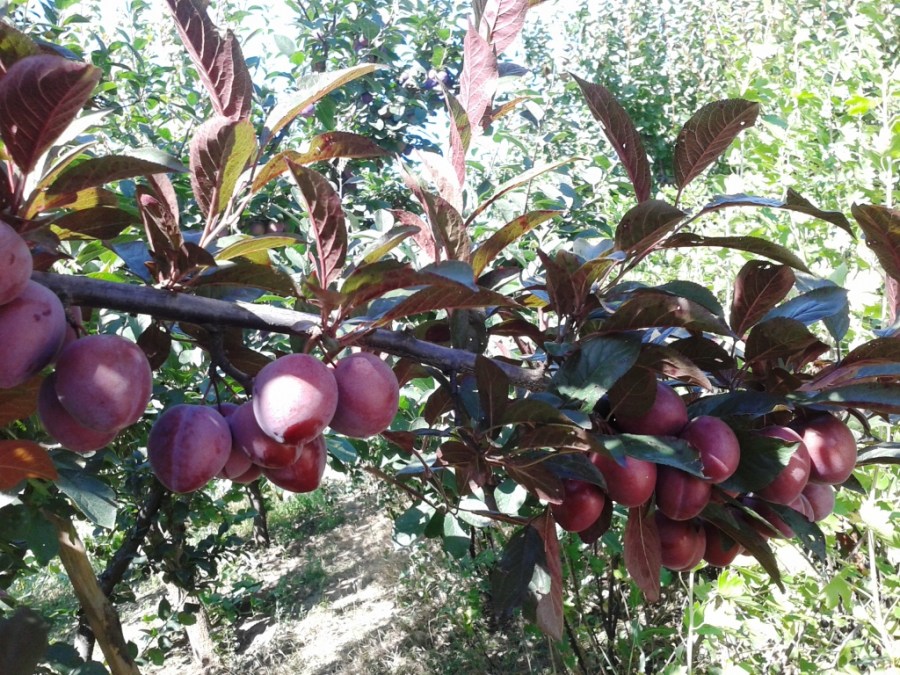Cherry plum - the best varieties of fruits. 115 photos and a detailed overview of all the properties of cherry plum for humans.
Now many summer residents are thinking about how to grow such a plant as "cherry plum" on their site. This is a fruit tree that looks like a plum tree, but is still very different from it. Initially, it grew only in Transcaucasia and Central Asia, local residents fell in love with it for the juiciness and sweet taste of the fruit.
Until the middle of the 20th century, cherry plum grew only in the south of our country, but thanks to Russian scientists, varieties were developed that can now be found in many parts of central Russia. Let's consider in the article a description of cherry plum and how to grow it.
The fruit crop of cherry plum is a drought tolerant and photophilous plant, accustomed to the bright sun. The height of the tree can vary from 8 to 12 meters. Usually it lives about 35 years, but there were more ancient trees.
Cherry plum is an unpretentious plant, resistant to diseases and damage. Two years after planting, the tree begins to bear fruit, because the crown grows very quickly and with each year the yield of the tree increases.
Ripe fruits can be harvested from late July to early September. Below are photos of cherry plums of different varieties.
Cherry plum variety selection
Now cherry plum is well adapted to the climate of central Russia, so now it can be found not only in the south of the country. At the moment, many varieties of cherry plum are bred. They can vary in resistance to cold, the shape, size and color of the fruit, from yellow to purple.
Very popular varieties with large fruits. For example, such varieties are Tent, Huck and Monomakh. Variety Tent brings the first fruits 4 years after planting, has large, yellow fruits and weighs up to 40 g, and from one tree you can harvest 35 kg. The variety perfectly tolerates frosts.
Grade Huck has dark yellow fruits of a slightly smaller size, but gardeners will also appreciate the yield. The fruits of the Monomakh variety are smaller in size, but they are not inferior in taste. Juicy purple berries have a wonderful and unusual taste.
Given the climate of our country, we often have cold winters, so it is worth considering frost-resistant varieties - Vladimir comet, Seedling Rocket and Timiryazevskaya. The first variety was bred relatively recently, but has already won the love of many gardeners, thanks to its special frost resistance. This is not the only advantage of the variety; it very quickly begins to bear fruit, increasing them every year.
Trees of the Seedling Rocket variety can withstand temperatures up to -30 degrees, so this variety is often chosen by residents of the northern regions. The fruits grow to 30 g and have a delicate taste and juiciness.
Alycha Timiryazevskaya was bred at the institute specifically for the northern regions of our country. This small tree, with a height of not more than 3 meters, brings up to 35 kg of crop and has a juicy pulp and sweet taste.
Many gardeners are looking for plant varieties that do not require additional pollination. Such self-fertile varieties as the Traveler, Mara and the Kuban comet will come to their aid. The first variety may be a pollinator for other trees. Each year it will yield a yield of up to 40 kg, and will also be resistant to both frost and drought.
Summer residents of central Russia bred self-fertile and frost-resistant cherry plum Mara. These are small trees of about 3 meters, which have good productivity, and the fruits ripen in mid-July and do not fall until September.
The last variety is not only self-fertile, but also has a good yield of about 40 kg per season, has large and sweet fruits.
Many people have a question, which cherry plum is better.There is no exact answer to it, but when choosing a variety, the following points should be considered. You should give preference to the variety that is more adapted to the climate of the area where it will grow.
You also need to ask how long the tree begins to bear fruit. The sooner this happens, the faster you get a good harvest.
If you rarely come to a summer cottage, you should choose varieties that are unpretentious and do not need good care. Otherwise, the tree will not bear much fruit or they will be small in size.
How to grow cherry plum
The best way to plant cherry plum is to root it with cuttings. Experienced gardeners are advised to plant cherry plum in the fall, so it will take root better than in the spring. It is better to choose a stalk that has already been grown in the territories of your region.
It is important to choose the right place for landing. This should be a site that is maximally protected from the winds, but at the same time sunny, so that the tree has enough light. So the plant will bear more fruits that will have a sweet taste and juiciness.
So that cherry plum cuttings are easily taken and well rooted, dig a hole about 50 cm and 80 cm in diameter. Add useful minerals and fertilizer to feed in advance. A little sand should be added to the clay soil, and soddy soil to the sandy soil.
When planting several trees, a distance of 2-3 meters should be observed, since in the future they will grow a crown, and the plants will interfere with each other. After planting, water the tree immediately.
Sometimes summer residents can use the shoot, which appears from the seeds, from cherry plum fruits that fell from the tree. But you can grow seedlings yourself. After frost, such seedlings can be planted in the ground.
How to prune plum plum
An important stage in the cultivation of a tree is the image of a cherry plum. Experts advise trimming this tree in the spring, from April to March, before the buds swell and the tree gains color. But if for some reason you missed this point and forgot to cut the tree, then you should not do this after the swelling of the buds, you should transfer this process to the next season.
Thinning pruning removes excess branches from the crown to allow light to penetrate future fruits and not interfere with their development, and also has a rejuvenating effect, saving the tree from old branches. You can do this in the summer, but then it will be more likely to corrective pruning, which will slightly affect the tree.
Usually produce medical pruning and save the tree from unnecessary branches. This procedure can be carried out all year round, excluding winter. Cherry plum is cut depending on the shape that they want to give to the crown of the tree and the frost resistance of this variety.
In frost-resistant varieties, branches can be left more authentic, trees not possessing such properties should be pruned at a height of 80 cm.
How to care for cherry plum
Care for cherry plum is expressed in the proper watering and top dressing of the tree. This plant is resistant to drought, but it should still be watered several times during the summer, in the absence of natural rainfall. In autumn, a tree is watered before winter cold, so that moisture is preserved in the roots.
If there was almost no snow in winter, then a tree should be shed in spring with the expectation of two buckets for one year of tree life. Cherry plum is usually fed in the fall, but other options are possible, the main thing is to do this no more than 3 times a year.
In the spring, minerals are added to promote fast and good flowering of the tree, usually urea, potash and phosphorus fertilizers.
Young cherry plum is watered a little more often, about five times a season. Usually cherry plum is not sheltered for the winter, but you can protect the newly planted trees from frost. Usually the roots are sprinkled with peat and covered with a dense cloth.
Photo of cherry plum
Intercom for home - 60 photos of the best appliances for a private home
Brick BBQ - 125 photos. Simple instructions on how to build yourself
Gasoline motor pump: 60 photos of the most effective water intake devices
Join the discussion:

